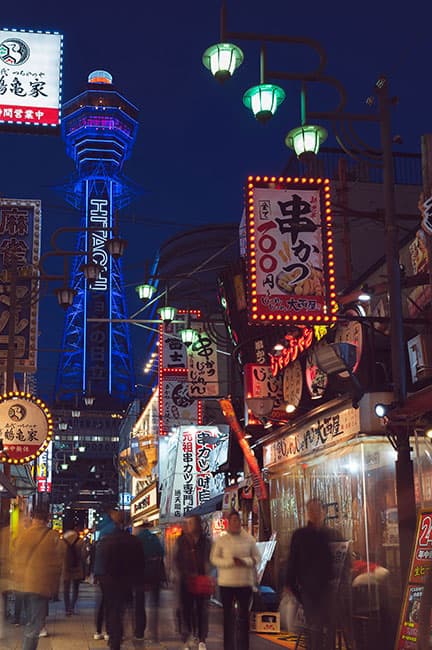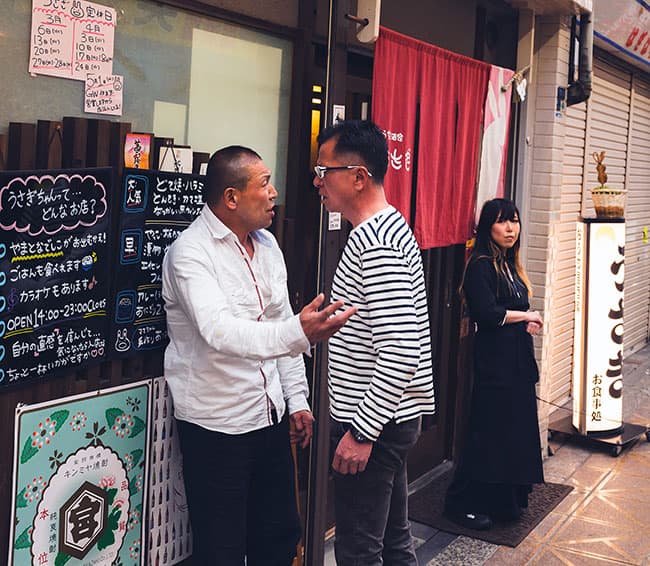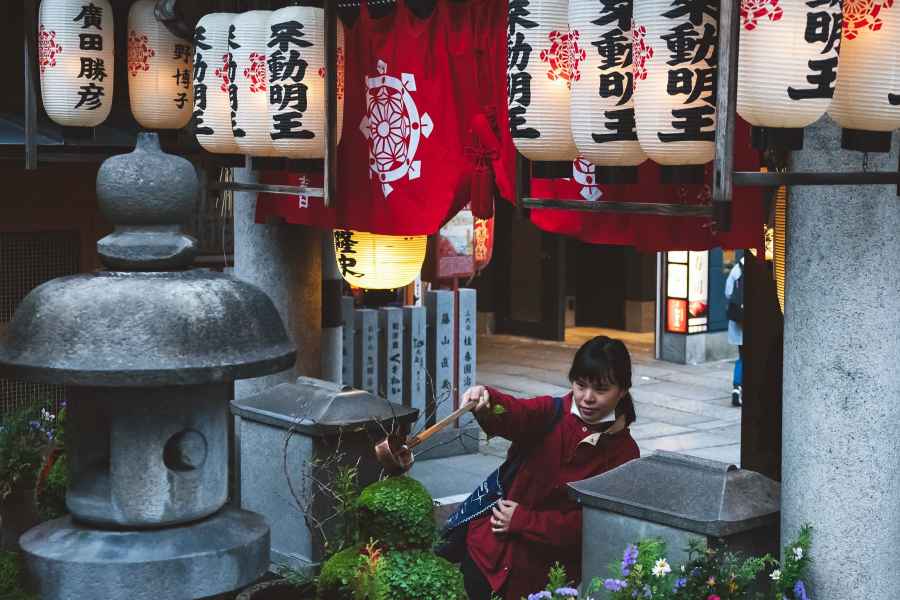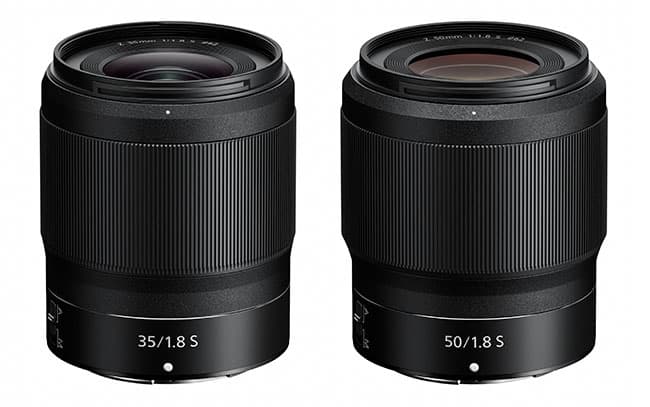Nikon Z 6 at a glance:
- £1,799 body only
- ISO 100 to 51,200 (expandable to 204,800)
- 12fps
- 273-point AF
- 3.2in LCD
- Single card slot (XQD)
- 4K video (up to 30fps)
- Rated 5-stars in our full review

Relatively compact, with a great EVF, stabilisation and ISO performance, the Z 6 is an outstanding travel camera. Nikkor Z 35mm f/1.8 S, 1/80sec at f/10, ISO 140. Credit: Geoff Harris
We live in an age of promiscuity, but I am having none of it. I’m talking about camera-system swapping, of course, as the remorseless rise of keenly priced mirrorless models persuades more and more photographers to trade in their DSLRs, or sees existing mirrorless shooters switching to a new brand entirely. As a travel, documentary and portrait/wedding photographer when I am not deputy-editing AP, I’ve been a heavy Nikon user for well over a decade now, and feel an emotional bond with its cameras and lenses that I don’t get with other makers’ gear. I am the first to admit that this sentiment is entirely subjective and unscientific, and probably comes down to the fact that nearly all my best photographic moments have happened with a Nikon in my hand. That is not to say that I am a blinkered zealot, however, and one of the best things about my job is being able to try out other makes (if you are reading this, Leica and Zeiss, I’d love to do a supermarket sweep of your current line-up…)
Anyway, like a lot of Nikon fans, I was intrigued when the full-frame Nikon Z series was announced, even more so when Andy and Michael, my rigorously objective and fastidious colleagues on the testing team, gave the Z 6 and Z 7 models a big, Paul McCartney- style, thumbs up. The Nikon Z 6 then hoovered-up the Enthusiast Camera of the Year and Product of the Year camera gongs at the recent AP awards, so I was itching to spend some quality time with the camera. The chance came earlier this year, when I got to visit Japan twice – once to cover the CP+ camera show in Yokohama, and then again in March, when I returned to this hugely photogenic country on a longer and more adventurous personal trip.

Combine the Z 6 with a lightweight travel tripod and you have a very portable solution for blue-hour shots Nikkor Z 35mm f/1.8 S, 1 sec at f/13, ISO 100. Credit: Geoff Harris
Fashionably late
As a Nikon full-frame DSLR user, the somewhat compromised Nikon 1 models didn’t appeal to me much as a personal camera, and like a lot of industry watchers, I assumed they’d left it rather late to be joining the mirrorless party. It was clear the Z series was something altogether more exciting though, and a few phone calls soon sorted me out with a review sample of the Z 6 and the Nikkor Z 35mm f/1.8 S and 50mm f/1.8 S prime lenses (my glass weapons of choice, being a bit old fashioned).
Getting used to the Z 6 after using a Nikon D750 took just a few minutes, as the cameras have very similar ergonomics, right down to a relatively large viewfinder unit. This is a big attraction for DSLR users worried about making the switch to mirrorless. Yes, there is a PASM dial and a mob of buttons, but the Z 6 layout still feels cleaner and more intuitive, as you’d expect of a camera that has been designed from the ground up, rather than inheriting a lot of the DNA of earlier DSLRs. It is lighter than the D750, too – 675g body only with battery, as opposed to 840g. There is a smaller choice of lenses for the Z series, but the 35mm and 50mm felt comparatively light too, despite their fast maximum apertures. That said, the Z 6 is still something of a porker compared to the more svelte Olympus Micro Four Thirds cameras, for example, or the best-designed APS-C models from Fujifilm or Leica. As a travel photographer, you do notice its weight around your neck and back after a hard day’s shooting and it does take up space in your bags, especially if taking more than one lens and a tripod. It seems that as mirrorless models get more sophisticated, they are getting quite bulky again.

The camera is relatively discreet, and silent mode came in useful here, as I didn’t want the two drunks to start on me instead! Credit: Geoff Harris
One benefit of this is sturdy build quality, and the Z 6 is reassuringly tough. The body is grippy and everything falls nicely to hand. It’s fair to say I don’t always treat my gear with kid gloves out in the field (apologies to Nikon if you are reading this), but the camera is resilient and scratch resistant, being built around the same magnesium alloy chassis as the higher-end Z 7. So it is fully weather-sealed to prevent moisture, dust and dirt getting through to the internals. Indeed, Nikon claims it’s weather-sealed to the same standard as the D850, and it coped with several Japanese downpours without complaint. The relatively clean design around the back also means that you don’t activate buttons and unwanted functions by mistake when pulling the Z6 in and out of bags, something which used to annoy me about the D750. The top OLED screen is also bright and easy to read.

The Z 6 isn’t as big or intimidating as a pro-spec SLR, especially with a prime lens. With powerful IBIS too, it’s perfect for quick street portraits. Credit: Geoff Harris
Dial it in
The ergonomics and menu design, while intelligent and a no-brainer for current Nikon DSLR users, are very good, with a few exceptions. In his full review of the Z 6 (AP 12 January) Michael Topham mentioned the slightly eccentric placement of the exposure compensation button, well off to the side of the shutter release, and I concur. I also found myself hunting for the ISO button, and fumbled around for the rather titchy AF joystick (sorry, thumbstick) until its placement lodged in my muscle memory. That said, I do have big hands, so more dextrous users may find this is simply not an issue. Nikon menus are quite ‘busy,’ but you do get used to them relatively quickly. Activating the self-timer on the Z 6, though, required checking back in the manual before I figured it all out. It should be easier to get to grips with such a basic function. But these are minor niggles rather than big headaches.
The EVF (electronic viewfinder) is simply fantastic. It offers 3.6 million dots with 0.8x magnification, showing shooting information against a black background above and below the previewed image. The EVF has a refresh rate of 60fps and is really clear and sharp, delivering a performance far superior to that of other higher-end mirrorless models I’ve tried. You get a very accurate preview of how the final image will turn out exposure-wise, and the EVF is highly legible in bright conditions. It’s one of the best things about the Z 6. The rear touchscreen is the same 2.1-million-dot unit found on the pricier Z 7, and you can set the AF point, activate the shutter and zoom into images by double- tapping on the screen. Although it tilts 90° up and 45° down for waist-level shooting, it can’t be pulled out to the side to help with portraits from awkward shooting angles. Hopefully we’ll see this on the next generation. I also noticed some lag when changing from EVF to screen and back again. Generally, though, both the EVF and screen on the Z 6 should go a long way to silence the last-remaining mirrorless refuseniks.

The 35mm and 50mm Z-series lenses I took to Japan were sharp, versatile and not too bulky. Nikkor Z 35mm f/1.8 S, 1/1600sec at f/3.5, ISO 125. Credit: Geoff Harris
Excellent IBIS and ISO
Before discussing more general aspects of the Z 6’s performance, allow me to sing the praises of the IBIS, or in-body image stabilisation. As with the EVF, there’s not much to say, however – it works really well. I did lug a travel tripod around with me in Japan, but didn’t end up using it much as the IBIS means you can get perfectly usable shots at shutter speeds of 1/5sec or even lower, depending on your focal length. Whether you are using AF or focusing manually, the Z 6 makes it as easy as it can be to get sharp shots. I mainly used single-point AF in AF-S mode, and the AF toggle makes it easy to whizz around the generous AF area (you can move the AF target diagonally too). Though the Z 6 ‘only’ has 273 AF points compared to the 493 on the Z 7, the AF coverage is impressively broad, with the points spread across 90% of the width and height of the image area. You can choose between pinpoint, single-point, dynamic area AF, wide-area AF and auto-area AF modes, and while eye-detection AF will be very welcome when it finally arrives as a firmware update, its absence is not a deal-breaker. Even more useful is the silent shooting mode, which was a huge advantage when working in Japanese temples or taking street candids; as with the self-timer though, it should be easier to find.
 Cranking up the ISO to 2800 was no problem in this gloomy sword workshop.
Cranking up the ISO to 2800 was no problem in this gloomy sword workshop.
Nikkor Z 50mm f/1.8 S, 1/125sec at f/3.2, ISO 2800. Credit: Geoff Harris
On the subject of temples and poorly lit interiors, the Z 6’s high ISO performance really shone through in dark interiors and poorer light. I tend to use Auto ISO and restrict the upper limit so I can worry about other things, and with the Z 6 I was quite happy to set it at 6400, which is probably very conservative given the camera’s capabilities.

The 50mm prime provided a lovely portrait of these two young women. Nikkor Z 50mm f/1.8 S, 1/640sec at f/2.8, ISO 100. Credit: Geoff Harris
For Z’s a jolly good fellow
Nikon received quite a lot of flak for using a single XQD card on the Z series, and these cards are certainly way pricier than similarly sized SD versions. A quality 64GB XQD card can gobble up the best part of £200, which is annoying when you consider the Z 6 is otherwise decent value compared to the premium-priced Z 7. Given the speed of XQD cards, it’s doubly annoying that the Z 6’s buffering doesn’t take full advantage of them, capturing 37 raw files at 12fps or 44 fine- quality JPEGs. This is good, but not earth-shattering in 2019. And yes, it was worrying not having an extra card slot to back up images on what might be a once-in-a- lifetime trip. But on the positive side, I find bigger XQD cards harder to lose than their SD brethren. Support for CFexpress cards is also promised in the long-awaited firmware update.
So to conclude. Having used the Z 6 a lot during my two trips to Japan I’ve grown to really like the camera and never felt short- changed by its 24.5MP sensor, compared to the Z 7’s 45.7MP chip. This may be because I veer more towards travel and documentary rather than high-resolution landscapes or advertising shots, but I wager even very demanding scenic shooters will like this camera, unless they regularly shoot billboards. The comparative lack of AF points wasn’t a big issue either, nor was the lack of eye-detection AF or the somewhat restricted articulated rear screen. The Z 6 is not perfect: the body is still a bit bulkier than I’d like as a travel photographer, battery life is average and some features should be easier to get to grips with, but when used with high-quality Z-series lenses, the performance and overall versatility of this camera is impressive indeed. It’s a great travel companion.
- Rated 5-stars in our full Nikon Z6 review
A quick word about lenses
As mentioned, I was lucky enough to take the Z series 35mm and 50mm prime lenses with me to Japan, and they were impressive – fast, smooth and easy to focus manually (focus peaking on the Z 6 is a delight to use). I was very impressed with their optical performance throughout the aperture range, and as with the camera, the lenses are well built without being too bulky – though just be careful you don’t knock the AF/M switch when pulling the camera out of the bag. If you want to use older Nikon lenses, you’ll need to buy an FTZ mount adapter, which will take up another 100 of your English pounds. For the full line-up of current and planned Z-series lenses, see www.nikon.co.uk.








